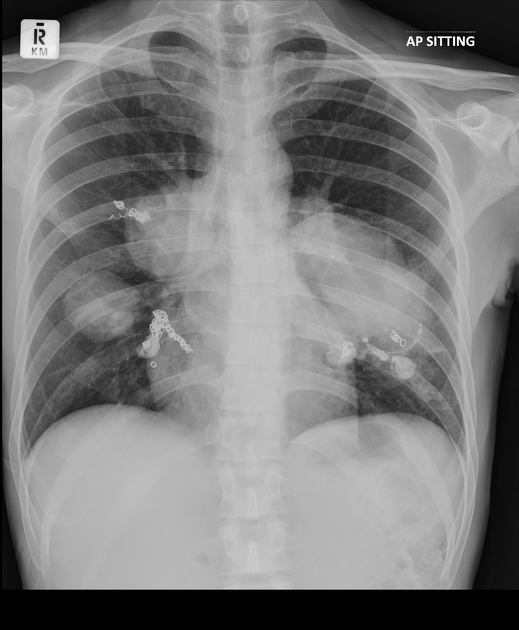Hughes-Stovin syndrome (HSS) is a vasculitis that predominantly affects large vessels. This syndrome bears some resemblance to Behçet disease.
On this page:
Epidemiology
Hughes-Stovin syndrome is very rare 7. It occurs predominantly between the 2nd and 4th decades. There is a recognized male predilection.
Diagnosis
There are no formal diagnostic criteria for Hughes-Stovin syndrome (c. 2023) 8.
Clinical presentation
The disease typically progresses in three sequential phases 5,7:
stage I: thrombophlebitis
stage II: formation and enlargement of pulmonary aneurysms
stage III: aneurysmal rupture
In stages I and II, patients can have a very varied presentation, including respiratory features (e.g. cough, dyspnea, hemoptysis, chest discomfort), features of peripheral venous thrombosis (e.g. those of a deep vein thrombosis), and neurological features (e.g. headache, seizures, focal neurological deficits) 7. The presentation of stage III is typically fatal, most commonly with massive hemoptysis 7.
Pathology
The pathogenesis of Hughes-Stovin syndrome is unknown, but is likely to be multifactorial, incorporating environmental (e.g. infections), genetic, and other immunological factors 7.
Distribution
Typically affects pulmonary and bronchial arteries, but any large vessel can be involved.
Radiographic features
Exact features will depend on the stage. Potential features include:
systemic thrombi in the vena cava, cerebral sinuses, or limb veins
pulmonary arterial occlusions due to emboli or thrombi
one or more segmental pulmonary arterial aneurysms
Treatment and prognosis
Management is guided by case reports and series owing to the rarity of the condition. Typically, immunosuppressive combinations are used, such as prednisolone with another immunosuppressant (e.g. cyclophosphamide, azathioprine) 7. Use of antiplatelet and anticoagulants does not prevent vascular thromboses and is therefore generally not recommended due to risk of fatal massive hemorrhage 7.
Complications
massive pulmonary hemorrhage (stage III): from a rupture of a pulmonary arterial aneurysm; often a terminal event 4
History and etymology
It is named after J P Hughes and P G Stovin who first described the condition in 1959 6.
Differential diagnosis
General imaging differential considerations include:





 Unable to process the form. Check for errors and try again.
Unable to process the form. Check for errors and try again.